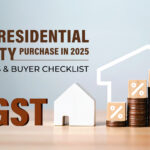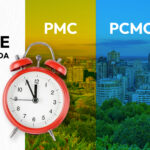Suburban regions like Hinjewadi, Wagholi, and Punawale are gaining traction due to their affordability, larger spaces, and improving infrastructure.
How Urban Migration is Shaping Pune’s Real Estate Landscape in 2025

Once a quiet cultural hub, Pune has evolved into a vibrant city, attracting professionals, students, and families from all over India. Why? Because it offers what many metros lack—space to breathe, reliable job markets, and top-tier education.
This steady wave of movement is part of a larger urban exodus, where people are leaving overpopulated metros for better quality of life in cities like Pune. As a result, the city is undergoing rapid urbanization, with new developments popping up across its landscape.
This shift is driving a clear real estate boom. Demand is up, especially in areas with good connectivity, infrastructure, and lifestyle perks. Whether you’re an investor or a first-time homebuyer, Pune’s transformation is an opportunity. If you’re looking to make a smart move in 2025, understanding this urban shift is step one. The right property, in the right location, could be your next big win.
Economic Forces Behind The Change
Pune’s population growth is being driven by clear, economic reasons. Professionals are arriving for IT, manufacturing, and finance roles. Students are enrolling in some of India’s most respected universities. Families are choosing Pune for its safety, climate, and lifestyle.
The city’s thriving employment hubs, like Hinjewadi, Kharadi, and Talawade, are expanding fast. This growth has led to higher commercial property demand as companies scale their presence and build new offices. With more people moving in, the need for quality housing is growing. Demand for residential real estate is strong, especially near tech parks, colleges, and industrial zones. These areas promise short commutes and better rental returns, making them attractive to both homeowners and investors. This shift is part of a wider urban exodus, with people moving out of overcrowded metros to cities that offer space, convenience, and cost-effective living. As more people settle here, Pune continues to evolve through rapid urbanization.
For buyers and investors, this is a strong signal. Pune is gaining momentum, and the time to act is now—while the right locations are still within reach.
The Rise of Pune’s Suburbs
As Pune grows outward, its suburban zones are becoming some of the city’s most active real estate markets. Rising demand, better infrastructure, and competitive pricing have pushed areas like Hinjewadi, Wagholi, Punawale, Ravet, and Tathawade into the spotlight. These locations are no longer viewed as distant or underdeveloped. They are now seen as viable, long-term investments with strong lifestyle appeal. Here’s what’s driving their rise:
Affordable Entry Points with Better Value Suburban homes offer larger carpet areas at more accessible price points. For first-time buyers and growing families, these zones provide a practical upgrade without overstretching budgets.
Surge in Real Estate Development Leading builders are focusing their energy on structured development in these pockets. Projects are designed for comfort, community living, and long-term growth.
Rising Demand for Gated Communities Buyers now prefer secure, planned environments. New projects are built as gated communities, featuring safety, green zones, play areas, and on-site conveniences.
Close Proximity to Employment Hubs These locations are strategically positioned near IT corridors, business parks, and industrial zones. This cuts down commute times and increases demand for real estate in both ownership and rental markets.
Infrastructure is Catching Up Road expansions, flyovers, and upcoming metro stations are making these suburbs more connected and practical for daily life.
The Role of Infrastructure Developments in Growth
Pune’s infrastructure developments are transforming the city, directly impacting both real estate prices and investment prospects. Here’s why infrastructure is becoming a game-changer for Pune’s real estate market:
Pune Metro Accelerating Commuting Times Phase 1 of the Pune Metro is already operational, making daily commutes quicker and more efficient. As the network expands, demand for nearby properties will increase, boosting their value.
Ring Road Project Enhancing Connectivity. The Ring Road will connect key highways, easing traffic congestion and offering quicker access to outlying suburbs. This will significantly enhance property demand in newly connected areas.
Boost in Suburban Property Appeal As connectivity improves, more people are willing to move to the suburbs. Better access to the city centre makes areas like Wagholi, Punawale, and Ravet more desirable for both buyers and investors.
Increased Commercial Demand With improved connectivity, businesses are attracted to setting up in suburban areas, increasing demand. More offices and retail spaces will naturally follow.
Enhanced Real Estate Development Infrastructure improvements are encouraging new projects, from residential complexes to business hubs, across well-connected zones.
Latest Housing Trends in Pune
The pandemic has fundamentally shifted how people view their homes. With work-from-home arrangements becoming a norm for many, larger homes and more flexible living spaces have become essential. People are now prioritising comfort, functionality, and long-term living over temporary fixes.
In Pune, this shift is driving demand for spacious homes with dedicated areas for home offices. Many buyers now prefer homes with extra rooms or larger layouts, allowing them to balance work and family life in the same space.
The rise of gated communities also reflects this shift. These developments offer more than just homes—they provide integrated lifestyles with amenities such as gyms, parks, and community halls. For families, the combination of safety and leisure within these communities is a significant draw.
Another emerging trend is the growing interest in integrated townships. These self-sustained projects, which blend residential, commercial, and recreational spaces, are gaining popularity as they reduce the need for long commutes and offer everything within close reach.
The Growing Rental Demand
Pune’s rental market is thriving, thanks to the influx of students, professionals, and families. As the city continues to grow, areas near IT hubs, educational institutions, and business parks are in high demand. This trend is particularly beneficial for investors seeking steady rental income.
Pune’s rental market is thriving, thanks to the influx of students, professionals, and families. As the city continues to grow, areas near IT hubs, educational institutions, and business parks are in high demand. This trend is particularly beneficial for investors seeking steady rental income.
Properties near popular IT parks like Hinjewadi and Kharadi are witnessing high occupancy rates. Professionals working in these zones prefer living close to their offices to cut down on commute times. For property owners, this presents a lucrative opportunity to cater to the commercial property demand in these areas.
The student population, drawn by Pune’s renowned universities, also fuels the rental market. Student-centric housing and shared accommodations are increasingly popular, ensuring consistent rental returns for investors targeting this demographic.
As development continues in these high-demand zones, the rental market shows no signs of slowing down. Investors can expect growing demand for well-located rental properties in the years ahead.
The Future of Smart and Green Living
Sustainability is becoming a key factor in Pune’s real estate market. Buyers are increasingly looking for homes that combine modern living with environmentally responsible practices.
Developers are now prioritising sustainable development by incorporating eco-friendly designs, energy-efficient systems, and green building certifications. This trend is attracting buyers who want to reduce their carbon footprint while enjoying the benefits of a modern lifestyle.
Another shift is the growing demand for smart home technologies. Features like automated lighting, temperature control, and security systems are no longer a luxury—they are expected in new homes. These smart solutions not only make life easier but also improve energy efficiency.
Gated communities and integrated townships are at the forefront of this trend. These developments offer a combination of sustainability, security, and smart technologies, creating self-sufficient, modern living spaces.
For investors, properties that incorporate these features are a valuable asset. As the demand for green and tech-driven homes grows, these properties are expected to see strong long-term returns.
Conclusion
Pune’s real estate market is undergoing a significant transformation driven by urban migration, infrastructure growth, and changing housing preferences. The city’s appeal as a hub for professionals, students, and families continues to rise, with suburban hotspots, improved connectivity, and sustainable living options leading the charge.
For investors and homebuyers, understanding these shifts is crucial. Areas with strong ,real estate development, modern amenities, and easy access to employment hubs are seeing the highest demand. With infrastructure projects like the Pune Metro and Ring Road enhancing connectivity, the potential for growth is clear.
BeyondWalls makes homebuying simple and more transparent. Backed by over 15 years of real estate expertise, we provide verified listings, tailored property recommendations, and expert support—from site visits to securing home loans. Say goodbye to fake listings and unnecessary hassles. Find your perfect property, backed by real-time availability and exclusive deals, all in one place.
FAQ
The rental market is strong, especially near IT hubs and educational institutions, as professionals and students continue to flock to the city.
Sustainable and smart homes offer eco-friendly living, long-term savings on energy bills, and increased resale value.
Infrastructure projects like the Pune Metro and Ring Road are improving connectivity, increasing demand for properties in connected areas.
The shift towards work-from-home arrangements has driven demand for larger homes with dedicated workspaces and more flexibility.
Thank you. Your comment will be visible after an approval.
Comments (0)
No comments found.







Add your comment